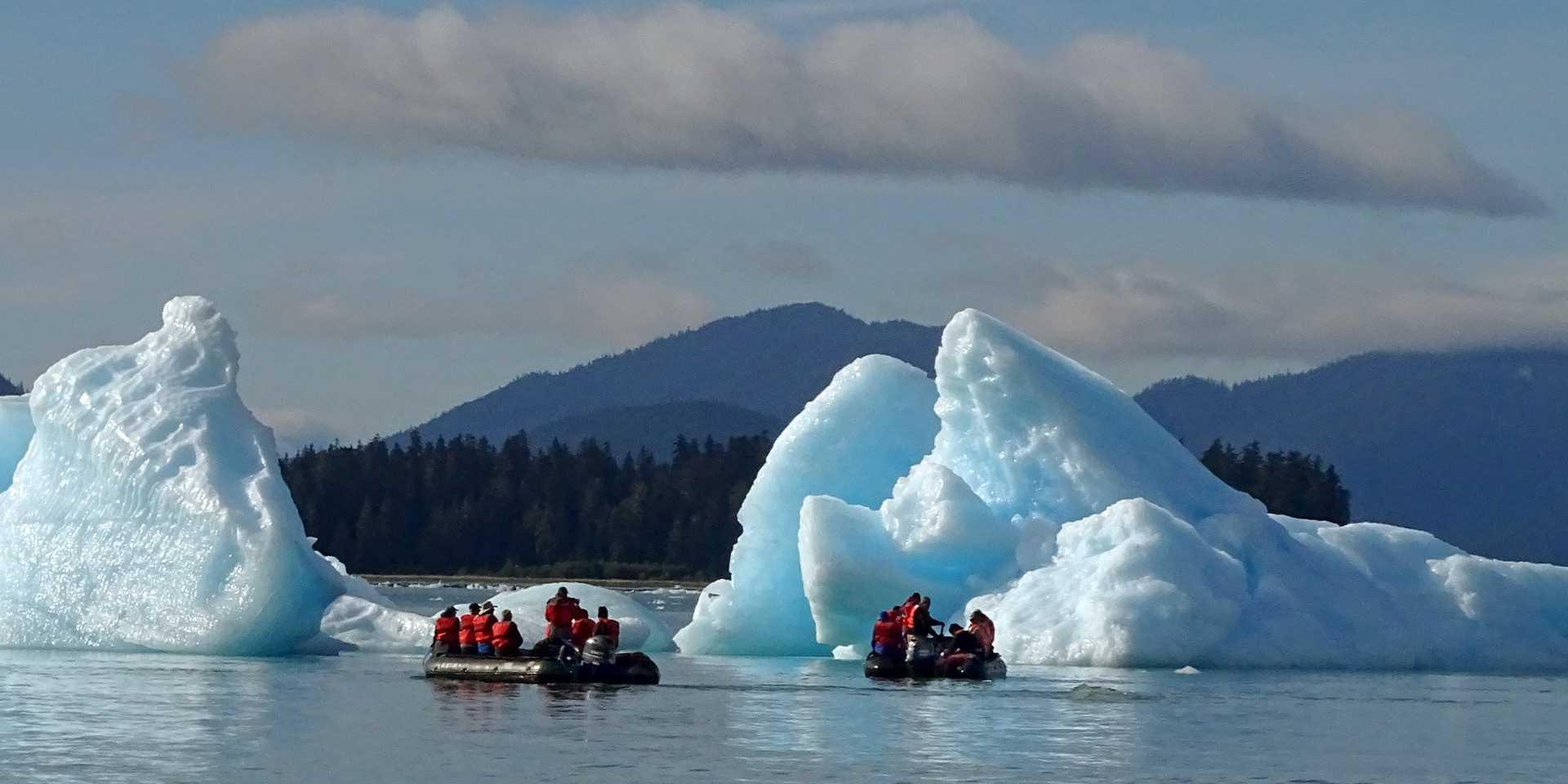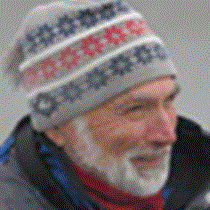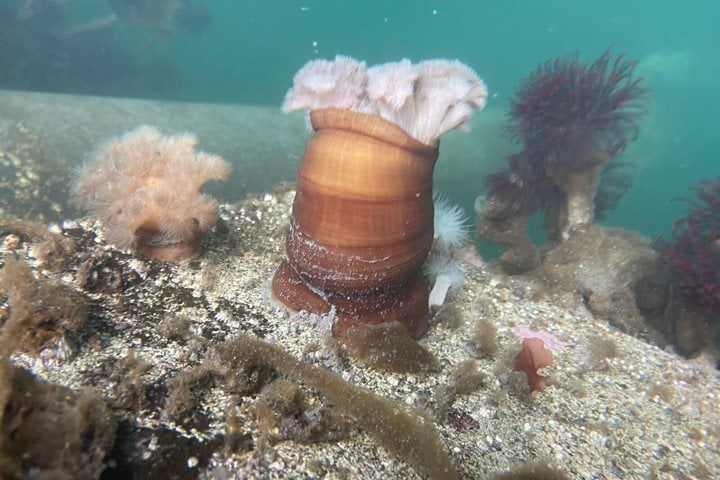LeConte Glacier is the farthest south of any of the tidewater glaciers in North America. It produces enough calving ice each year to make an ice cube 500 feet on a side. In the early days ships came from San Francisco to carry back ice. One of the reasons Petersburg was settled nearby is because the ice helped early fishermen keep their catch cold. We were here to admire a virtual gallery of giant sculptures displayed floating on a perfectly flat surface surrounded by a dark green band of trees. This display changes by the day as glacial ice pours very slowly from the Stikine Ice Field 22 miles away and 5,000 feet above us. As every wilderness traveler knows, this kaleidoscope of ever-changing scenes is the essence of exploring new places.
In the afternoon we discovered the many facets of Petersburg, “the town that fish built,” but Petersburg is far more than fish. Most folks in smaller Alaskan towns have very friendly people. Petersburg is not on the cruise ship circuit, so they seem to treat outsiders quite kindly with smiles and cheerful hellos. There was time to visit the shops, devour ice cream cones, walk the docks to view fishing gear, go on a photo stroll, or explore by bicycle. The distant views of the town were especially postcard perfect, because the clear skies allowed us to see a backdrop of stunning craggy pinnacles and peaks of granite that defines the crest of the Coast Range.
Some of our outings included crossing the Wrangell Narrows by expedition landing craft and then walking up to a muskeg. This garden of bonsaied trees is carpeted with sphagnum moss and dotted with dark-colored ponds. Carnivorous sundews ring the water as damsel and dragonflies stitch the air above. A wide boardwalk covered with purse-seine netting to give good footing led some of us up a small rise and over to Petersburg Creek. We enjoyed the warm sunny weather and were soon on our way back to town.
Once aboard we were soon pulling away from the dock, devouring appetizers. We passed northern sea lions stacked on a navigation aid and headed on into Fredrick Sound. It is all-you-can-eat Dungeness crab night, so other additions to this expedition report would seem inconsequential, at least to our guests. The evening was calm and the lighting was beautiful.
Part way through our dinner, the officers and crew spotted about 11 killer whales. We turned the ship and followed them south. Their dorsal fin shapes, saddle markings, and behavior told us they were residents, the type that eats fish. One magnificent male had an especially tall dorsal fin that was well over five and a half feet above him. We watched until the lack of good light made viewing difficult and the distant peaks faded into darkness.







